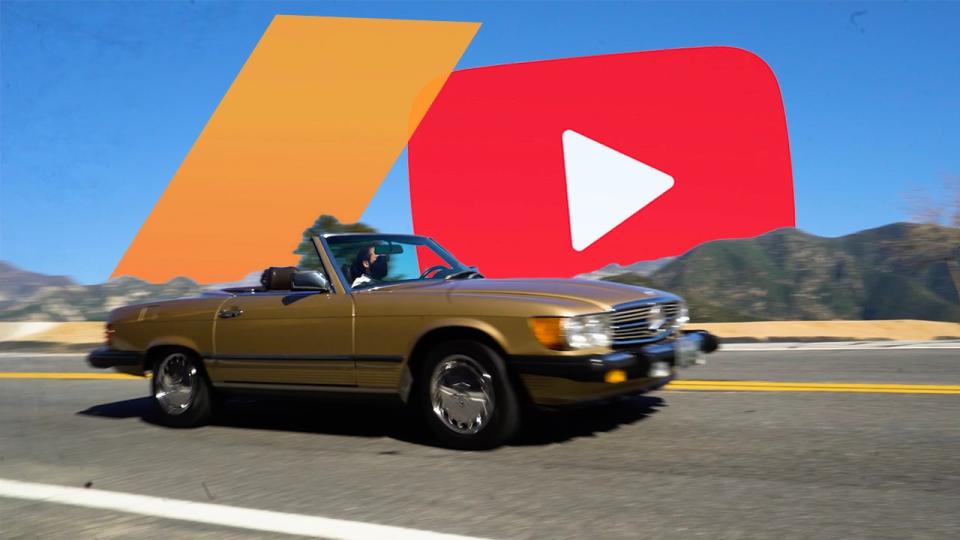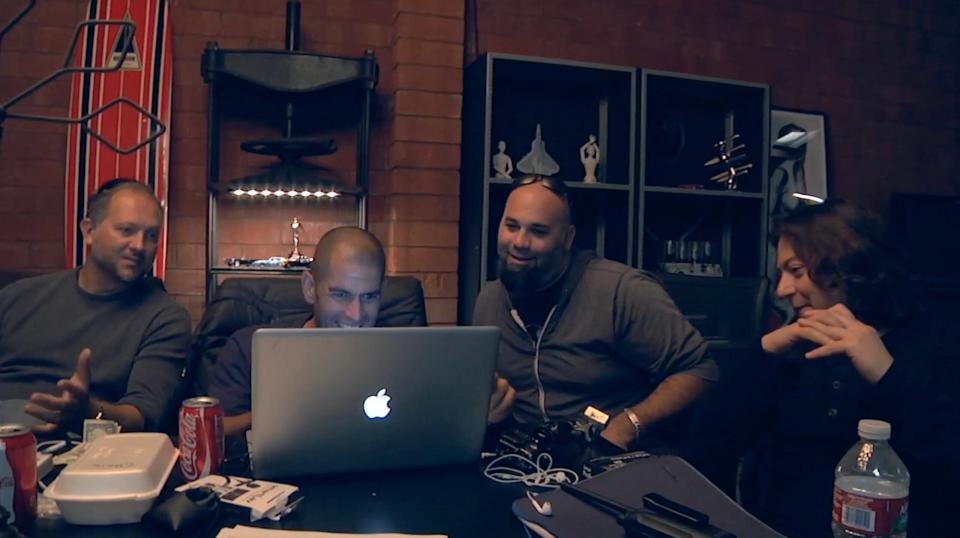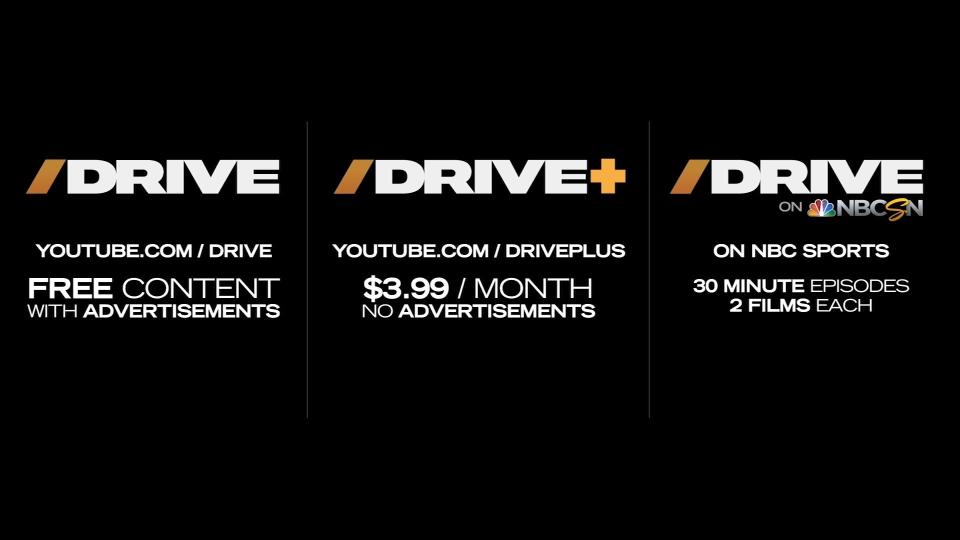Here's the Real Story of The Drive's YouTube Channel, and How We're Bringing It Back

It’s one of the most common questions we get. What the hell happened to /DRIVE on YouTube? The short and easy answer is that it went supernova. Just burned so damn bright, it collapsed. It took real brilliance to launch the first major independent automotive channel over a decade ago, when doing high-quality car videos online wasn’t a thing. That energy can’t be contained, or protected, forever.
The long answer… well the long answer just got a bit longer, because today, The Drive officially returns to YouTube! And we’re starting by explaining the real story of the channel: its meteoric rise; its chaotic, painful fall; and how we’re bringing it back. Check it out below—and stay for the preview of our first new series at 6:30.
It's called Carisma. Each episode will profile of one enthusiast and their car to explore how it defines them and their place in the culture—and how we're all a lot more alike than individual tastes might show. Beautiful visuals and deep conversations at a moment where we enthusiasts need to be looking out for each other. The first episode drops tomorrow, and then we'll have weekly videos on Fridays.
Of course, you’re reading this on thedrive.com, so hopefully you know we’ve built a pretty great daily site for car enthusiasts out of the diffuse nebula left by the channel’s original run. But we always wanted to get back to YouTube and carry on that incredible legacy.
It’s been five years since our last regular uploads, and even longer since the original hosts were all together. Is there anything more frustrating than when something you love just slips out of your life as mysteriously as it arrived? I think we owe you this explanation, with the generous help of some friends: JF Musial, Mike Spinelli, and Matt Farah.
A Star Is Born

The story is, at its core, defined by money (what else). What many people still don’t know is that our channel was literally funded by YouTube at the beginning, part of a $100M investment it made in developing original content in 2011 and 2012. The Drive would have never existed without YouTube cutting some giant checks back then.
How we ended up with a slice of that cash is interesting and important. Back in 2008, when “streaming” was barely a whisper on the industry’s lips, Musial and Spinelli worked at an online production company called Next New Networks that developed and distributed TV-like shows for video platforms, including Fast Lane Daily and Farah’s first show Garage 419. It was co-founded by Emil Rensing, a talented media executive and car enthusiast.
Both guys left by 2010, but a year later YouTube bought the company. As part of that original content push, it approached three automotive outlets about participating. Two said yes, one said no, and YouTube executives asked Rensing if he could figure out a replacement.
“Emil immediately said yes, and then didn't have any idea how to do it, and came to me and was like, ‘okay, if you were about to get a couple million dollars, what YouTube channel would you make?’” Musial says. “And I designed /DRIVE. Like, on a back of fucking piece of paper.”
It was a series of shows celebrating car culture, squarely aimed at dethroning Motor Trend and Car & Driver as the premier storytellers for automotive enthusiasts.
His first call was to Spinelli. “We met in Bryant Park. I was like, where are you? He was over at the Intercontinental working in the fucking lobby. I'm in the city. We'll just go,” Spinelli says. “So we met up at Bryant Park and he laid all this stuff out, and I was like, Jesus Christ, this is amazing.”
Next up, Matt Farah and Alex Roy. Chris Harris, though he wasn’t Top Gear-famous yet, was a huge get. Musial flew to Germany to corner him at the 2011 Nurburgring 24 after Harris made an offhand promise to sign a contract if he showed up. It worked.
After a frantic three-month development period and a final pitch to YouTube, /DRIVE launched in January 2012. The channel immediately found an audience and grew alongside its following. Shows like /DRIVEN, /TUNED, /CHRIS HARRIS ON CARS, AFTER/DRIVE, /SHAKEDOWN, /ROAD TESTAMENT demanded attention. After a successful first year, the universe expanded even more in 2013, adding hosts like Mike Musto and Larry Kosilla and ambitious projects like our /INSIDE KOENIGSEGG series, and absolutely wild videos like Chris Harris hammering a Ferrari F40 and F50.
https://youtu.be/3MDTcXGsjuo?si=UG4WKOclrwxHryEE
“I mean, it was a really, really good time. I got to make videos I wanted to make with the people that I wanted to make them with, which is not a given,” Farah says. “Everyone who worked on the YouTube channel and the TV show was just really good at their job. Long story short, some of the most fun I've ever had making car videos was doing the /DRIVE stuff.”
It felt like a true cultural epicenter had formed. But it wasn’t going to last.
The Troubles Begin
At the end of 2013, YouTube finally had enough of paying creators and shut down its content funding program. This was an existential threat—no one was getting rich off the channel anyway, and now it was losing money. To survive in 2014, the channel had to pay for itself, somehow.
One effort was the NBC Sports show, /Drive on NBC Sports, which came about when NBC approached us to essentially make more of what was already on YouTube for TV. That helped with the bottom line, but because NBC owned the content, it couldn’t run in full on YouTube.
Far more infamously, we also tried out our doomed subscription plan. Today, asking people to pay creators for content they like—$3.99 a month for ad-free, full length videos in this case—is normal. Back then, it was cause for a riot.
“People were not used to paying for content. There was a major backlash. And in the same way that the hosts get all the credit when the films are good, the hosts get all the blame when financial decisions are made that don't seem to work out,” Farah says. “Harris and I were called greedy and all this crazy shit, even though both of us took major pay cuts just to keep working. I don't know why it wasn’t very obvious, but nobody really understood why it would take money to make highly premium content. We were just too early.”


 Yahoo Autos
Yahoo Autos 